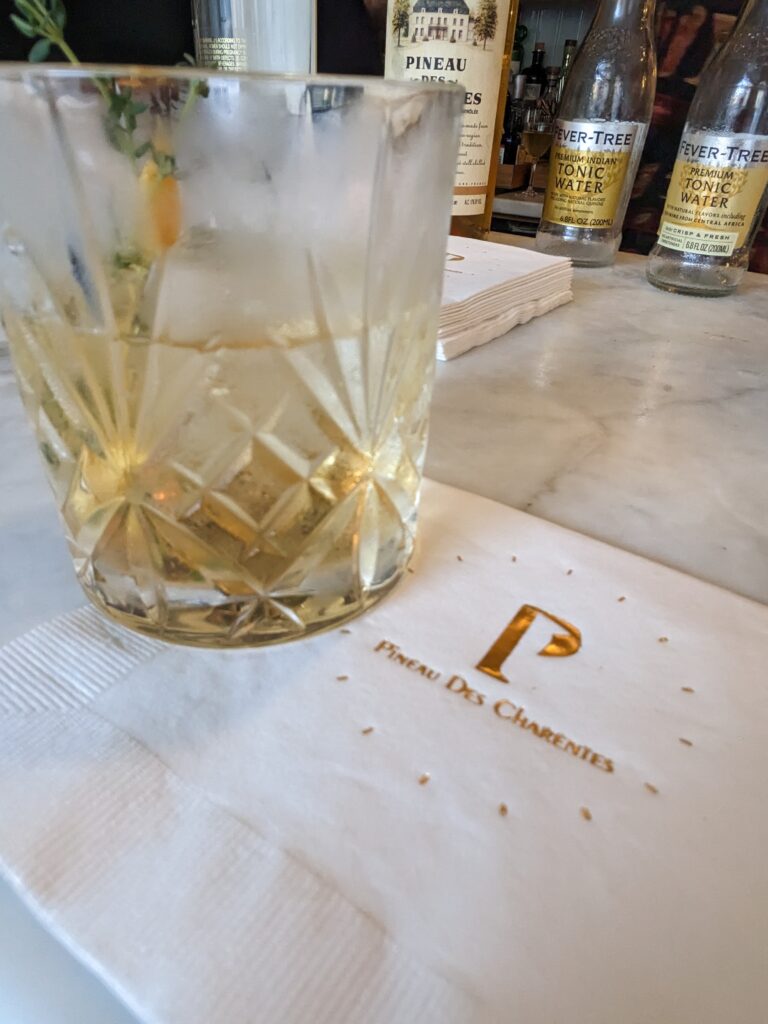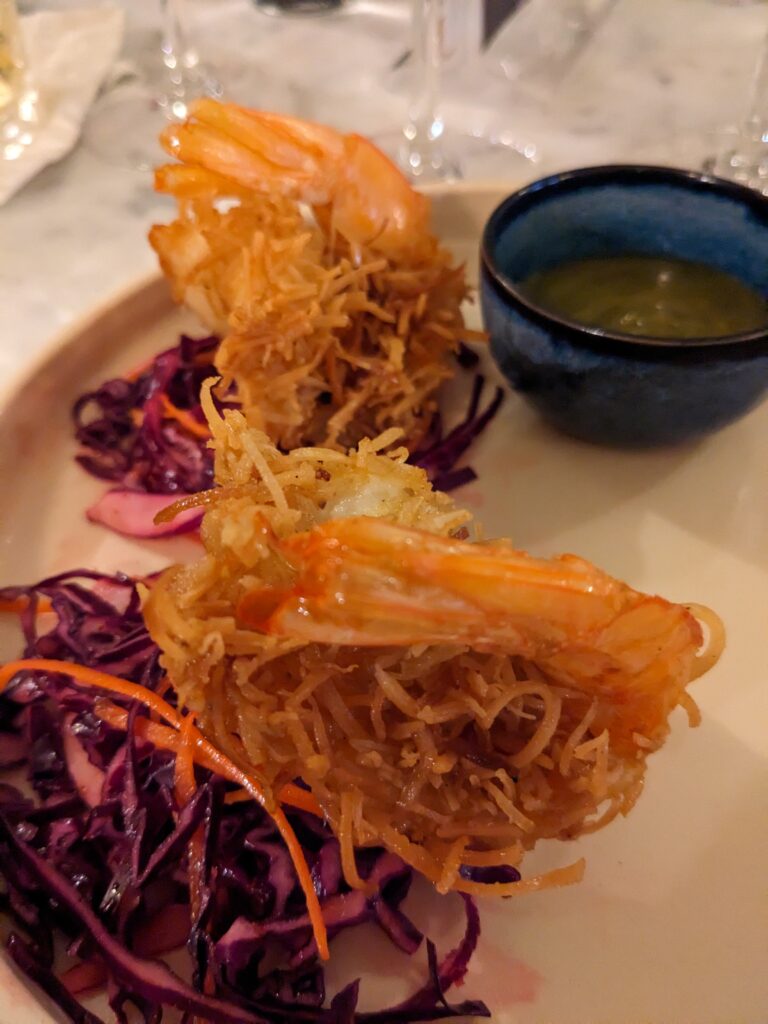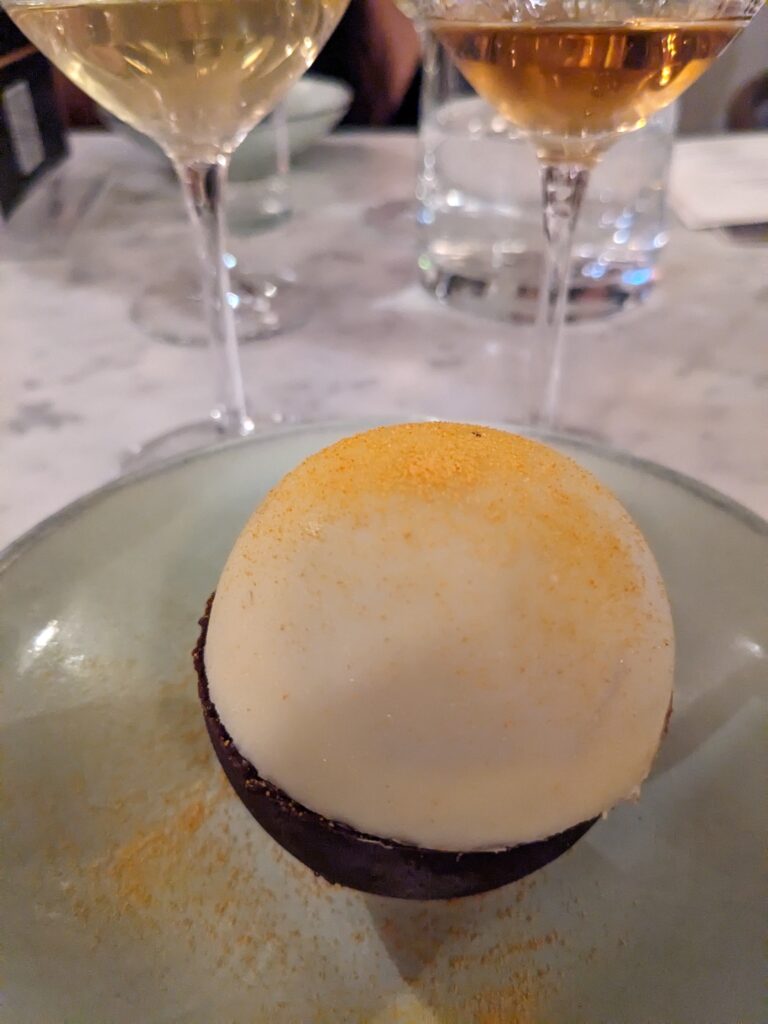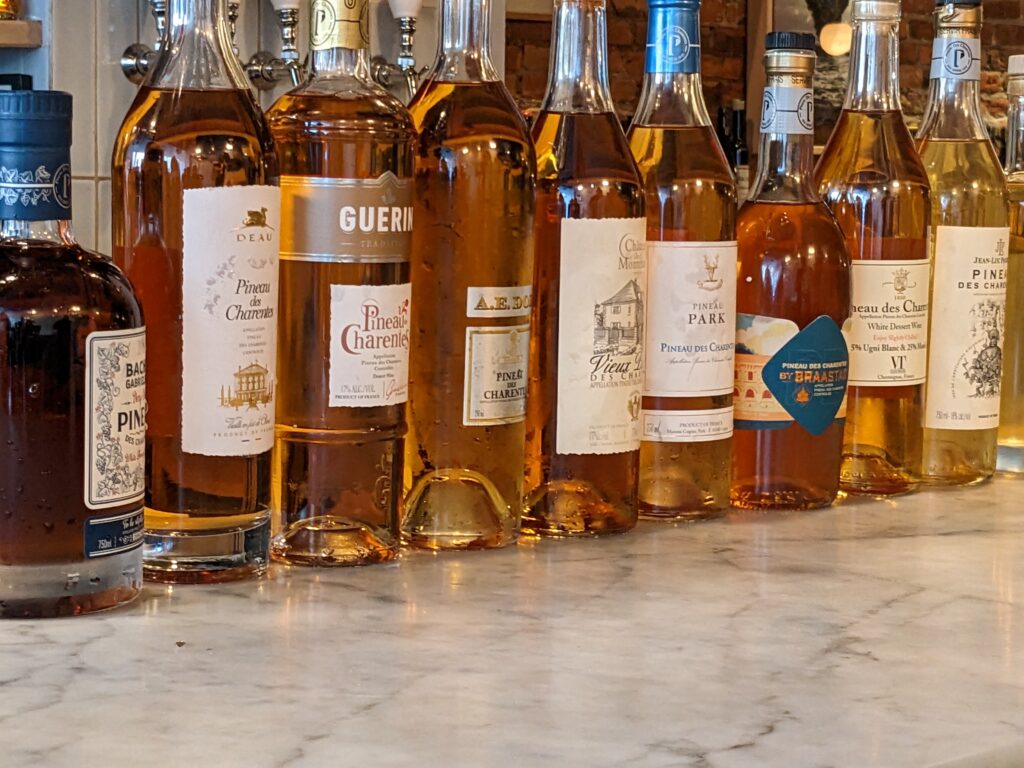
Fortified wines aren’t very well known among most consumers, And, no, it has nothing to do with vitamins. Rather, the fortification comes in the form of the addition of a grape-based spirit to raise the alcohol level and consequently halt the fermentation process. As a result, some of the sweetness in the wine remains instead of being fully converted to alcohol as would be the case with a dry wine.
While Port, Sherry and Madeira are more recognizable in this category, Pineau des Charentes is definitely deserving of consideration. It hails from the Charente and Charente-Maritime regions of France, which is where Cognac is made and has had Appellation d’Origine Contrôlée (AOC) status since 1945, which guarantees quality and an adherence to minimum production requirements.
In particular, it must be aged for at least 18 months, 12 of which must be spent in oak. Wines designated as “old” must age for a minimum of seven years, while the “very old” must age for 12 years. Produced from Ugni Blanc, Colombard, Folle Blanche and other local grape varieties, it shares many similarities with Cognac, but are generally sweet wines, with an alcohol level of 17% (compared to 40% proof Cognac).
Not surprisingly, with its freshness and lower alcohol, it is well suited to cocktails. In fact, it is quite versatile and diverse in its expression, yielding a wide range of options. These wines can also be enjoyed on their own and can be a great pairing throughout the meal – not just with dessert – despite their sweetness. Rather, they are quite food friendly, a point made abundantly clear at a recent dinner at l’Accolade in New York City’s West Village neighborhood.

Presided over by Ms. Franky Marshall, who bills herself as a modern bartender, the evening got off to a great start with a Pineau & Tonic with thyme and grapefruit, which beautifully displayed the freshness, balance and aromatics of this wine. Franky has been working with Pineau des Charentes since 2017, and, once we were seated, paired each dish with a different Pineau option. In this fashion, she joked that we were “speed dating” the wines.
I was very impressed with the breadth and depth of what was in the glass and really enjoyed drinking the Pineaus with the meal.
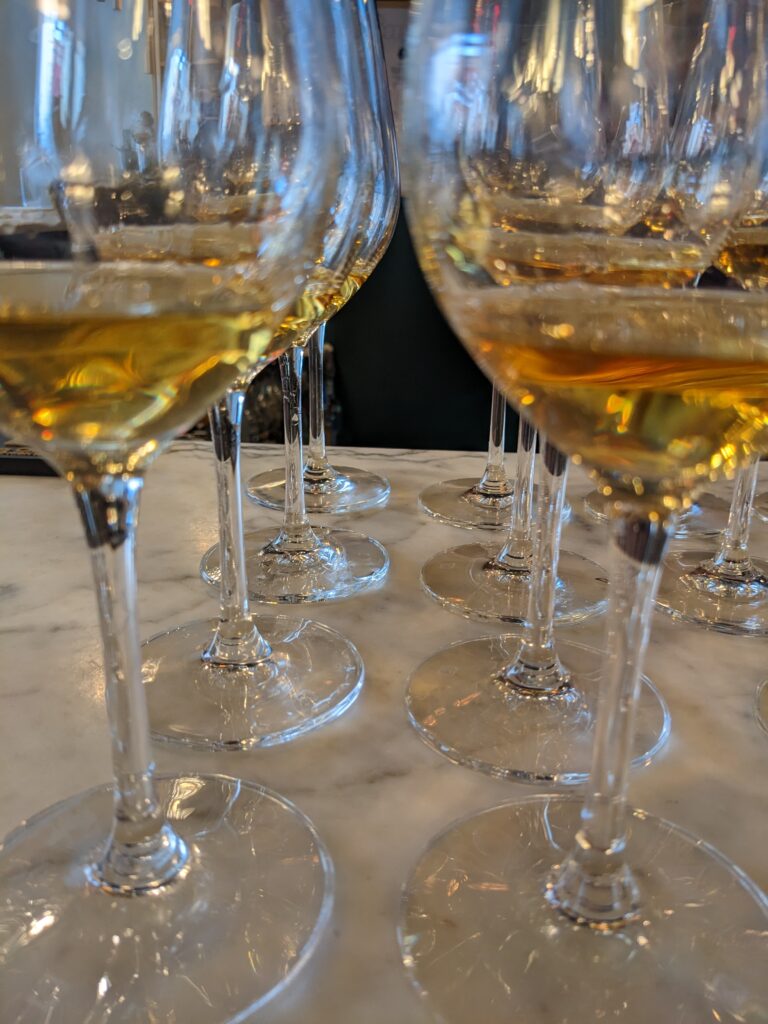
With my Coconut Shrimp appetizer, prepared with coconut, peanut dressing and a pepper cabbage salad, I enjoyed two Pineau des Charentes. The first of which was distinctly floral with maple aromas and flavors, while the second option was more intense and heavier in its texture and weight on the palate. They each matched well, but I was more partial to the former, as a counterpoint to the dressing.
My main course of Monkfish served with zuchini, shrimp nage and mango puree was accompanied by one with caramel notes and a clean finish and another that was lighter, with bright acidity. Both were really lovely with the richness of the dish.
For dessert, I had the chocolate mousse with almondine, orange chocolate cake and almond puree. My Pineau pairings included a wine with light citrus notes that was medium sweet yet well balanced, with an herbal undercurrent. The other was more complex, with fuller body, caramel, burnt orange and rancio aromas and flavors, that had been aged for 15 years. The two wines paired really well, but the second wine was my favorite of the two for its complexity and rancio character.
If these wines are not on your radar (and likely they aren’t), I encourage you to seek them out or perhaps encourage your favorite bartender to try their hand at Pineau cocktails – for a twist on a classic or their own, new creation.
For more information on Pineau des Charentes, check out the Pineau Academy: https://pineauacademy.com/

